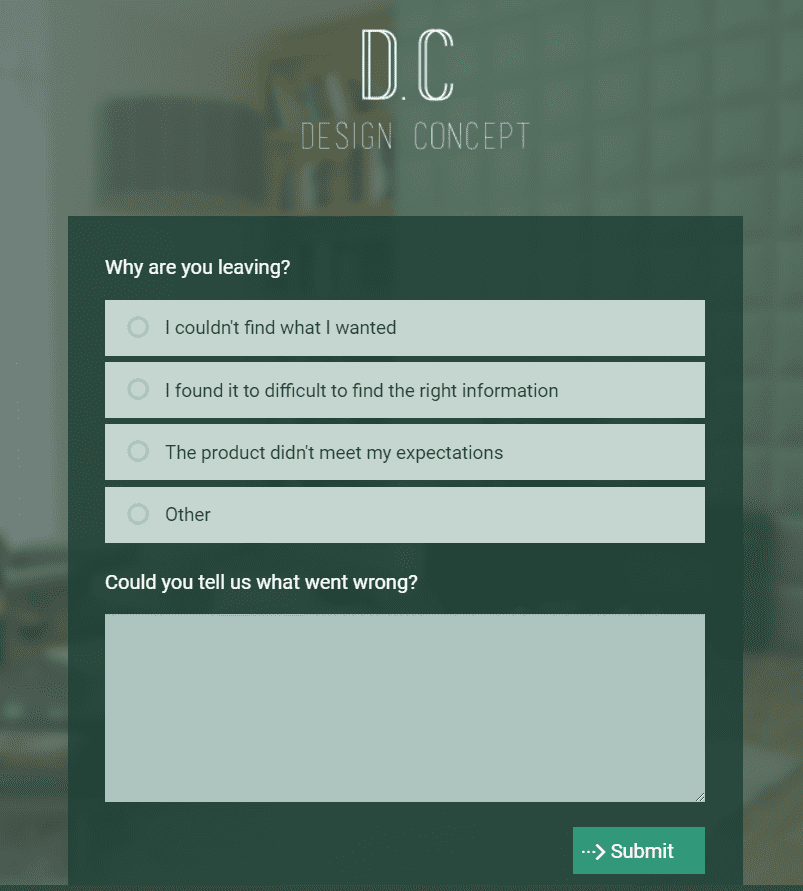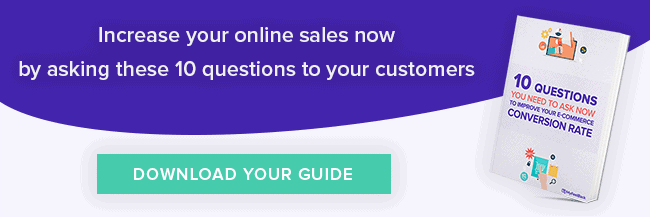More and more businesses are pushing the boundaries to deliver the best customer experience ever, and a brand’s website is one of the most important elements of that experience. A brand’s website is still the number one place customers go to find out more about the company as well as its products or services. The...
More and more businesses are pushing the boundaries to deliver the best customer experience ever, and a brand’s website is one of the most important elements of that experience.
A brand’s website is still the number one place customers go to find out more about the company as well as its products or services. The longer a website can hold their attention, the more loyal customers become.
However, many website visits are never converting into sales, due to site abandonment, or bounce rate (percentage of visitors who arrive on a website, visit one page, and then leave). Of course, the higher bounce rate the lower chances youu’ll get to convert visitors into leads and sales.

In order to help business owners understand what could be causing customers to abandon their websites, here is an overview of five common errors business owners make with their websites and how to correct these errors.
1- Communicate a clear value proposition to your customers
Nielsen Norman Group reports that a website must communicate a clear value proposition within 10 seconds. If a website passes this initial harsh judgment, it means the customer is likely to stay on the website longer according to the study, usually from 2 minutes upwoard, which is “an eternity on the web.”

A value proposition clearly expresses a company’s value, what customers can expect when they buy from the company. More specifically, a value proposition answers four key questions every shopper has:
- What product or service is the company selling?
- What is the end-benefit of using it?
- Who is the target customer for this product or service?
- What makes the offering unique and different?
For two good examples, see Geekdom and Square, both of them express clear value propositions on their landing pages.
2- You are not attracting the right traffic to your website…
High bounce rates can indicate that you aren’t clearly presenting who you are and what you have to offer.Therefore, you are not attracting the right people. To address this problem, there are a few things you can check:
- Review meta descriptions to ensure that you aren’t misrepresenting what your site is about. Descriptions should generally point to what the site has to offer, inspire curiosity, use common keywords, and be no longer than 155 words or Google will truncate it. According to Dr. Pete Meyers, who is specialized in studying Google algorithms, optimizing meta descriptions are crucial for SEO because:
“whether or not a result gets clicked on is one of Google’s and Bing’s first clues about whether any given result is a good match to a query.” – Dr. Pete Meyers
So, one key to attracting the right customers, driving clicks, and increasing conversions is to write relevant snippets of information.

- Focus on keeping high rankings for your branded terms so people who know you can easily find you. Pretend you’re a customer for your own service, which keywords would you search for? The best is to ask your customers directly how they found you.
- Constantly fine-tune your website targeting to better capture the right visitors. Consider, for example, posting links on Reddit which is an invaluable source of free traffic. Find the most relevant Reddit thread related to your niche and, during peak user hours, post links on it to your own website.You can also post content that positions you as the authority on a given subject matter, content which your prospective buyers search for when looking for a new provider like you. Regular blogging is an effective way to do this, HubSpot reports that undervaluing the importance of frequent blogging is equal to leaving money on the table. According to its findings, businesses that regularly blog see a 55% increase in website traffic.
3- You’re Ignoring mobile responsiveness
In today’s world, a responsive, mobile-friendly website is necessary for any business. Not only do customers expect this, but again, it’s an important part of Google’s search engine ranking algorithm.
Here is some key data concerning the importance of designing mobile-friendly websites:
- A Google survey found that 75% of visitors were more likely to return to mobile friendly websites, 61% were likely to leave if a site wasn’t mobile friendly, and 67% were more likely to buy at a mobile friendly website.
- ComScore reports that, mobile-only users now exceed the number of desktop users in the U.S.
- According to Mobify, “30% of mobile shoppers abandon a transaction if the experience is not optimized for mobiles.”

All of the evidence demonstrates that it is crucial to have a considered and responsive mobile website design, being simple and intuitive for the user.
If visitors find it difficult or displeasing to navigate your website on mobile, you’ll just lose them. Of course, designing a mobile-friendly site requires more work, but it will offer greater rewards as it is more likely to generate more leads and convert leads into loyal customers.
Now you understand the importance of considering how customers engage with a website.
“Today’s consumers are on the go and regularly shift between desktop, mobile, and tablet devices throughout the day. Retailers and marketers now need to be aware of the multiple devices used by consumers along the purchase journey.”
Marius Smyth, EMEA managing director – Retargeting platform AdRoll
4- Make things easier, let your Customers pick
One way to instantly drive customers away from a website is to bury the company’s knowledge base, on an antiquated FAQ page. Today’s visitors expect an omnichannel experience. Regardless of which channel they enter, which page they visit or where they are in the sales process, customers want to get answers quickly and effortlessly.
Learn more on how to gather feedback across all channels using 3 tools.
Implementing a smart self-service solution provides your customers the information they need, while answering the questions they have at all times throughout the customer journey. Think of it as protection against bounce rates. Self-sufficient visitors can decide and easily find, what information they need at any point in the journey.

By making information easy to find and to understand, with less effort as possible, you’re cutting out the opportunity for your customers to get frustrated and run away. If you are not sure wether you giving this to your visitors, you can ask them for feedback.
5- You’re not Including a Call-to-Action
Including a clear call-to-action on a website could make the difference between bounce and conversion and can come in many forms. Whenever customers are asked to do something online, they are responding to a call-to-action: downloading a PDF, filling out a survey, buying a product, or even just clicking through to another page.
According to a recent study, 70% of business-to-business websites don’t include a clear call-to-action. Unfortunately, these businesses are losing out on opportunities to increase visitor engagement and, thus, the likelihood of completing more sales.
There is no magic formula for creating a persuasive call to action, it simply takes creativity and time. But, anyhow you need to find the good balance between being simple enough so that users can easily understand the message and compelling enough to persuade them to do something.

You need to optimize your website’s potential
At the end of the day, it all comes down to keeping a customer centric mindset when developing an e-commerce website.
Simply throwing together a website, with product images and a shopping cart will not suffice. Take the time to invest in pleasing customers. You should figure out:
1- What they want to know before purchasing
2- Why they are leaving the website
3- How to improve the website to increase conversions.
Taking these steps can make a world of a difference!

MyFeelBack – survey example
Nowadays you can approach your customers with highly personalized and targetted surveys, these will enable you to get your customers feedback in real time. They will let you know about their customer satisfaction, but especially you need to focus on what they are not enjoying in regards to customer experience and satisfaction.
Working on these topics will allow you to answer your customers’ concerns and stop you visitors from leaving your e-commerce website.








